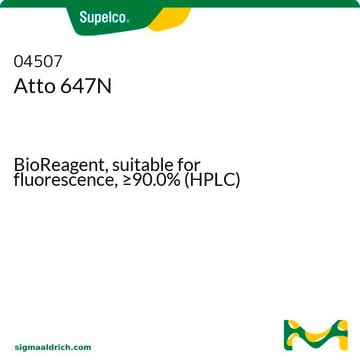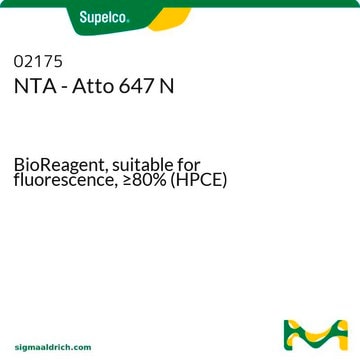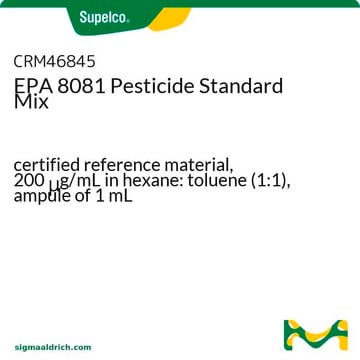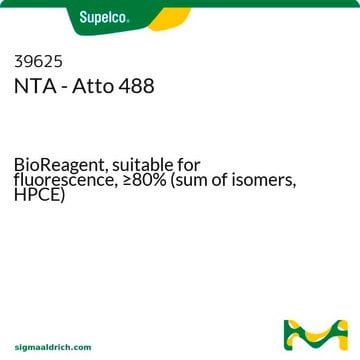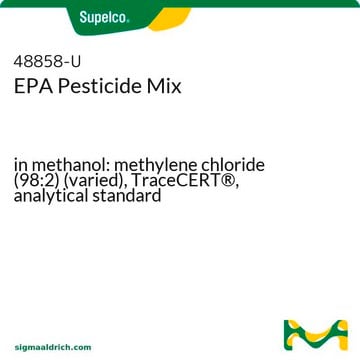Per the product technical bulletin, the labeling reaction is sufficient for 1 mg of protein at a concentration of 2–10 mg/mL, and the two-hour incubation step is at room temperature.
76508
Atto 647N Protein Labeling Kit
BioReagent, suitable for fluorescence
Seleccione un Tamaño
837,00 €
Seleccione un Tamaño
About This Item
837,00 €
Productos recomendados
Línea del producto
BioReagent
Nivel de calidad
fabricante / nombre comercial
ATTO-TEC GmbH
fluorescencia
λex 647 nm; λem 661 nm in 0.1 M phosphate buffer, pH 7.0 (recommended)
idoneidad
suitable for fluorescence
temp. de almacenamiento
2-8°C
¿Está buscando productos similares? Visita Guía de comparación de productos
Descripción general
Información legal
Código de clase de almacenamiento
10 - Combustible liquids
Punto de inflamabilidad (°F)
Not applicable
Punto de inflamabilidad (°C)
Not applicable
Elija entre una de las versiones más recientes:
¿Ya tiene este producto?
Encuentre la documentación para los productos que ha comprado recientemente en la Biblioteca de documentos.
Los clientes también vieron
Artículos
Protein labeling kits with Atto and Tracy dyes provide easy fluorescent labeling of purified proteins, enzymes, and antibodies.
-
Is there an optimal volume of protein at c=2mg/ml (e.g. is it better to have 1 mg in 0.5ml PBS or 2mg in 1ml PBS). Incubation of 2h is performed on RT or +4C?
1 respuesta-
¿Le ha resultado útil?
-
-
Will this kit efficiently label protein on a much smaller scale of < 20ug of protein or at concentration below 2 mg/ml?
1 respuesta-
The dye should be reconstituted in 20 ul of DMSO and the total volume added to 1 mg of the antibody (at 2-10 mg/ml). If the amount of antibody is less, it needs to be at 2 mg/ml, and the amount of dye added to the antibody solution should be proportionally reduced. For example, if there is 200 ug of antibody (at 2 mg/ml), 4 ul of the DMSO solution of the dye should be added to the antibody. It's important for the user to use very accurate pipettes to avoid adding too much dye to the antibody, which could result in the labeling of the antibody in the antigen-binding site. If less protein is used, the amount of dye can be reduced. There is always an excess of dye to ensure labeling efficiency, and a part of the dye will be separated (as unbound dye) by a purification step afterward. The proteins need to have a minimum concentration due to the strong hydrolysis tendency of the NHS-functionality. If the protein solution is too dilute, the dye will be hydrolyzed before it reaches an amine-group of a protein.
¿Le ha resultado útil?
-
Filtros activos
Nuestro equipo de científicos tiene experiencia en todas las áreas de investigación: Ciencias de la vida, Ciencia de los materiales, Síntesis química, Cromatografía, Analítica y muchas otras.
Póngase en contacto con el Servicio técnico
